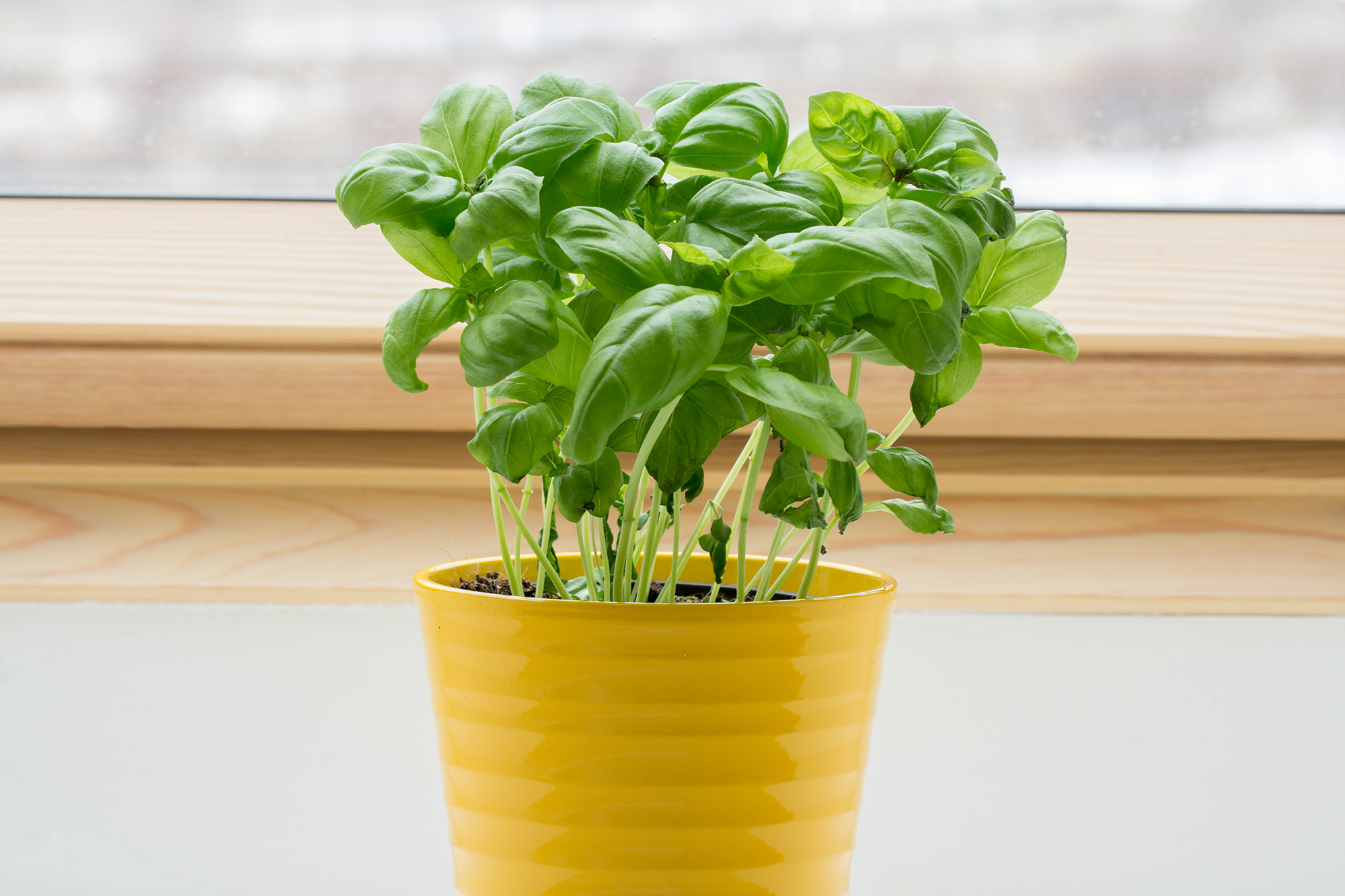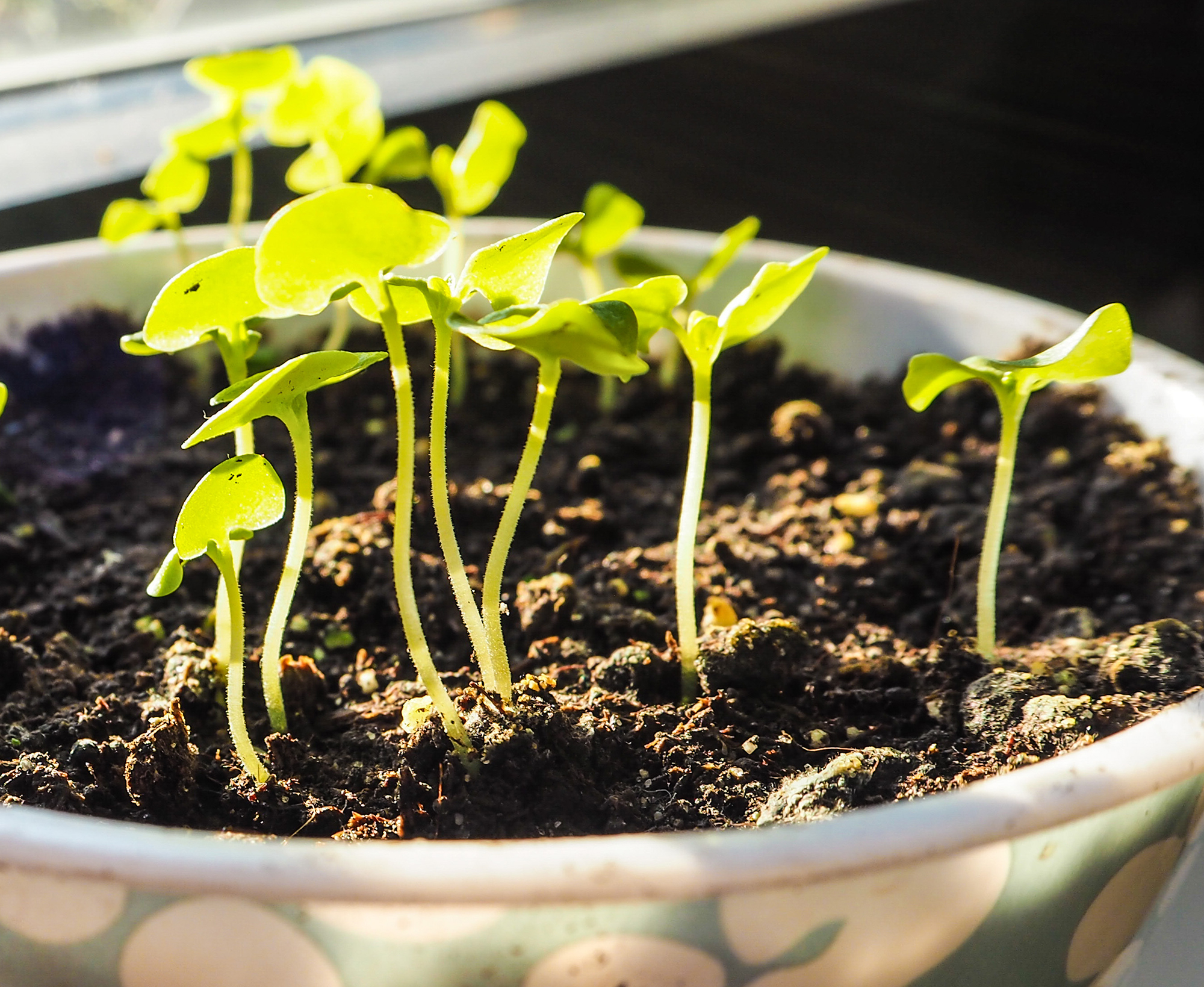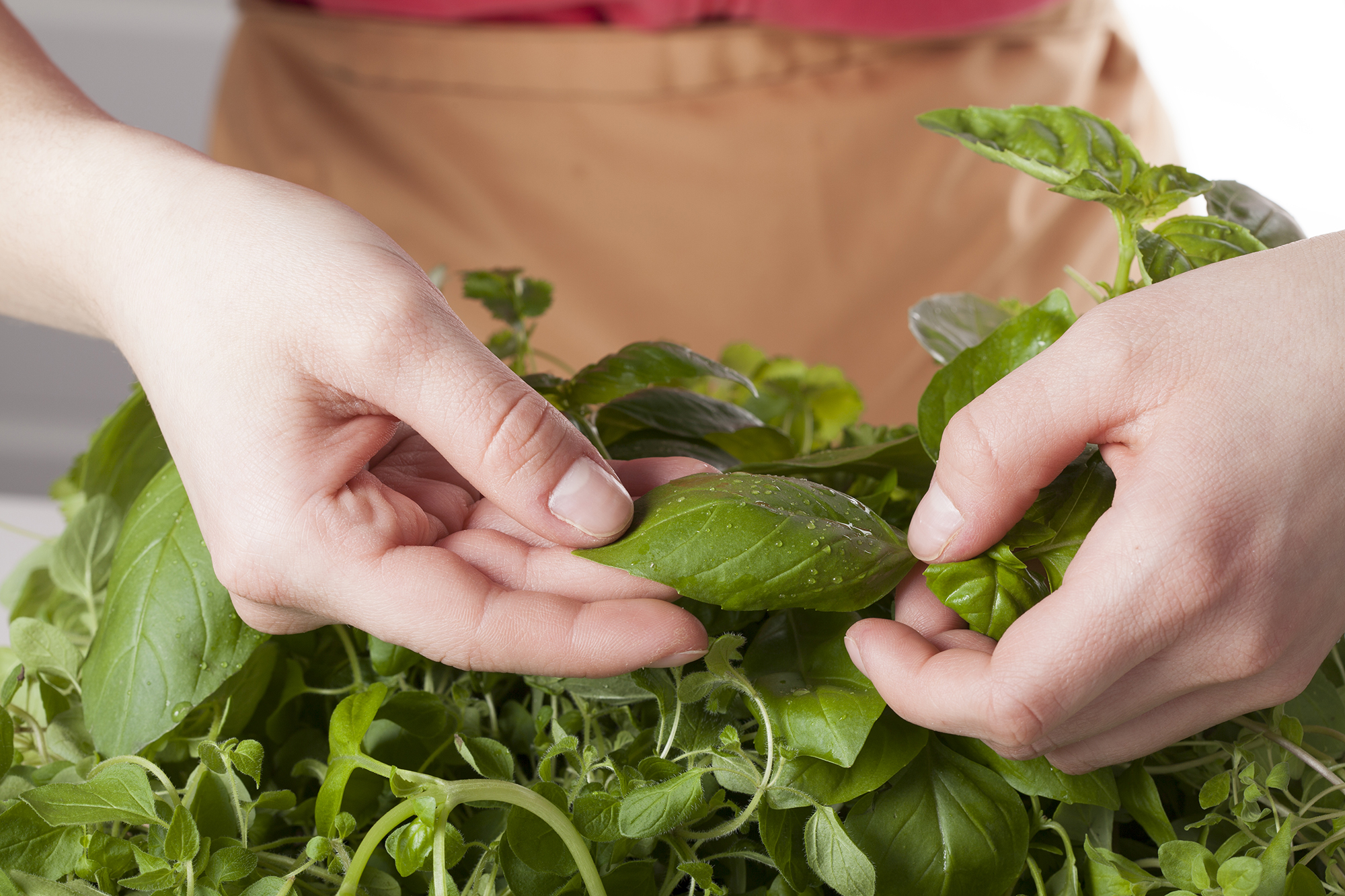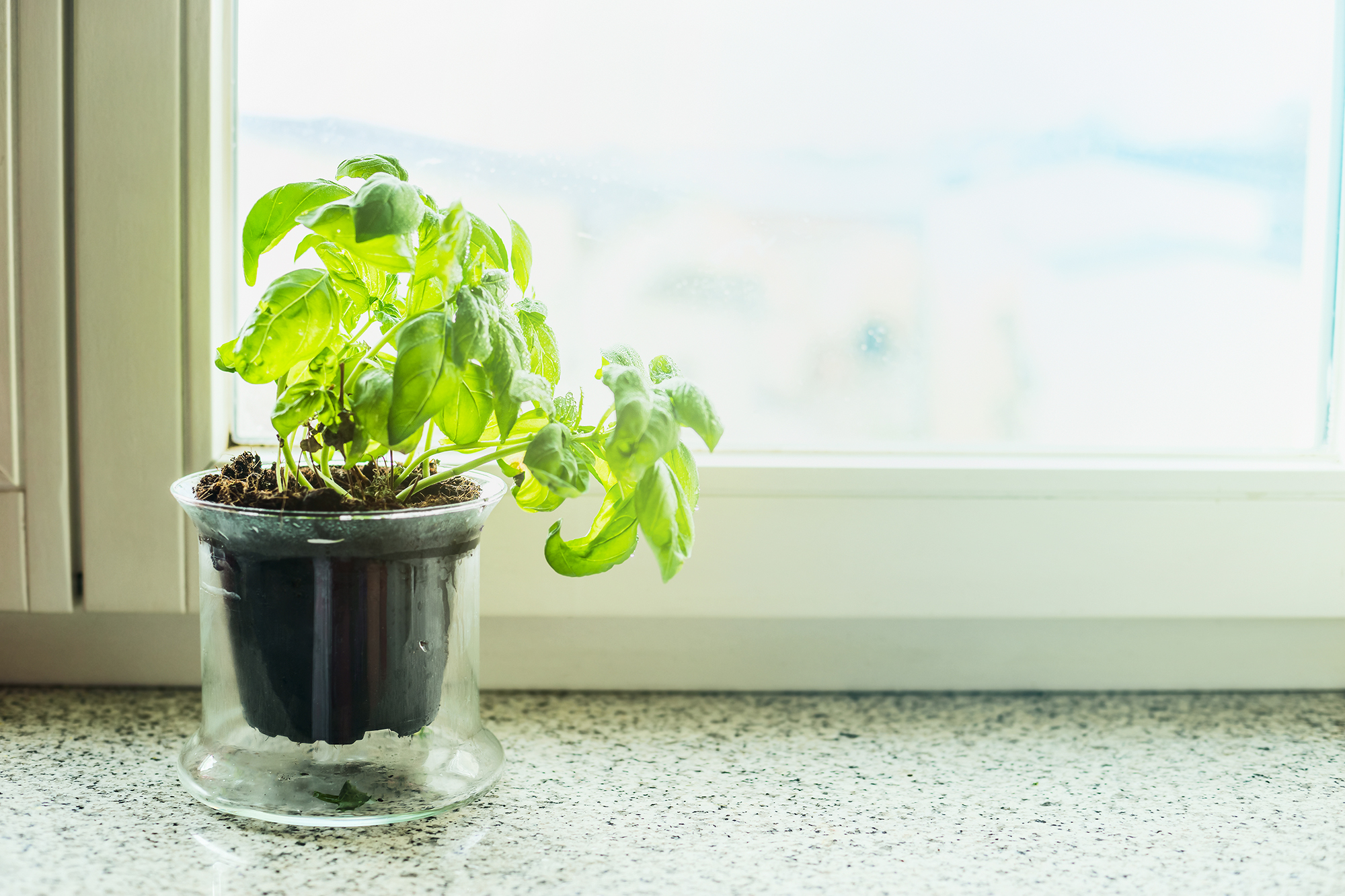How to grow basil

Associated with Mediterranean and southeast Asian cooking, basil brings a strong, sweet and floral flavour and aroma to dishes. Here’s everything you need to know about how to grow basil or keep your supermarket plant alive.
No kitchen should be without basil. The versatile herb adds heady flavour to pestos and peps up meat dishes. Asian varieties stand up in stir-fries, and it can even be used in sweet recipes like ice cream.
If you want to grow your own, the herb thrives with plenty of sunshine. Basil needs at least six hours of sun a day and temperatures above 15°C, making it the perfect candidate for your windowsill. In fact, studies have shown that grown indoors, this aromatic herb can produce double the essentials oils of its outdoor siblings, giving you more flavour for your money.

Carlos Amarillo/Shutterstock
Growing basil indoors
Basil needs to be started off indoors even if you plan to grow on outdoors. It won’t tolerate the cold and will die in a frost. You’ll need to find a warm room where the temperature remains at around 21°C so the seeds can germinate.
Sow in March and try three seeds per small pot. Place the seeds onto pre-watered, peat-free seed compost and sprinkle a thin layer of soil on top.
A heated propagator will get your seeds off to a great start but you can also make your own mini greenhouse to increase humidity. Simply cover the tray or pot with a plastic bag and secure with an elastic band. Remove once you see the seedlings emerge.
In around four weeks the basil seedlings will be raring to go. Once you can handle them – usually when they have a ‘true leaf’ shaped like a basil leaf rather than the oval seed leaf – you can transfer them into bigger pots. Tease them out with the end of a pencil and avoid holding them by the stem or the roots. Make a hole in the new soil with your pencil and pop the seed in. Ensure the soil is level with the seed leaves.
Basil can be succession sowed which means sowing another batch as soon as the first seedlings are up. It’ll ensure a regular supply of fresh leaves all summer.

Luoxi/Shutterstock
Where to buy a basil plant
If you want to get your basil fix more quickly, you can buy mature plants from garden centres. The basil will have been potted for you and given a kick-start in optimum growing conditions.
The other alternative is buying supermarket plants. Be warned, though. These glossy specimens might look like one plant but they’re usually dozens of seedlings crammed together in one pot. Coupled with under-watering and artificial lighting in the shop, the plants will need extra care at home.
Basil plant care
It’s tempting to leave basil plants to grow lots of leaves but regular pruning makes plants more productive. Start snipping after the fourth set of leaves. Cut at the stem, pinching out the tips above the lower leaf axis so you get the freshest and most pungent harvest.
One basil plant should provide you with around half a cup of leaves. It takes around two weeks for the leaves to fully re-grow.

Photographee.eu/Shutterstock
To keep supermarket basil going for longer, transplant the plant into a pot double the size. It should last a few months like this. Alternatively, choose a healthy stem and root in water. Cut a 10cm (4 inches) section at the crown, take off any lower leaves and pop it into a glass of water. Once you see a nest of white roots, you can transplant your cutting into a small pot of compost.
You could also try splitting your supermarket plants and transplanting them into separate pots. Gently empty the pot and split it, root and all, into clumps. Pop each section into a pot, pushing compost down and around the sides, and give them a good water. They may go into ‘shock’ for a few days and look limp, but they’ll soon recover. Don't be tempted to water again until the soil is dry.

VICUSCHKA/Shutterstock
Why does my basil keep dying?
Basil is very sensitive to changes in conditions – plants don’t like being wet, cold or thirsty. The key to good basil growth is a consistent temperature, day and night, above 15°C. In winter, windowsills can get too cold and radiators can give out too much heat. Young plants kept in full sunlight all day can scorch and wilt.
You should only water when the soil is dry and never on the leaves – it will cause your basil to rot. It’s best to water plants in the morning so they can soak up the liquid without sitting in a puddle.
Basil can quickly outgrow a small pot indoors so it’s worth regularly checking for roots at the bottom of the pot. If there are lots, it will need transferring to a bigger pot.
Don’t despair if your basil plant doesn’t make it through the winter, though. In the UK, basil is treated as an annual herb, which means it will only grow well for one season.
You might also like:
Comments
Be the first to comment
Do you want to comment on this article? You need to be signed in for this feature